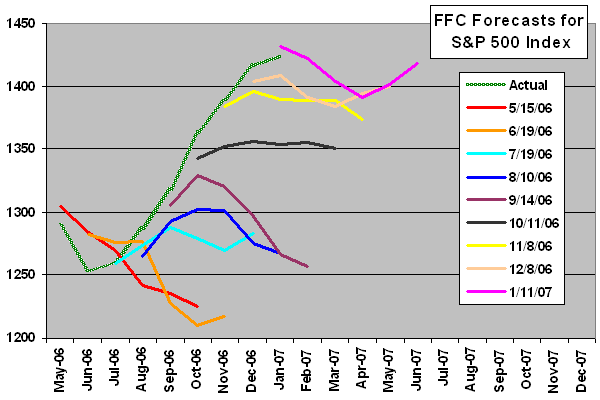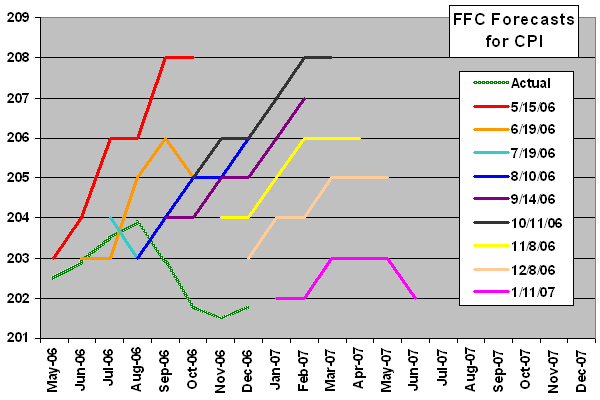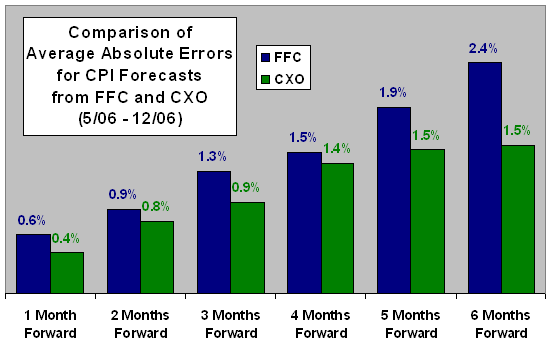The Financial Forecast Center (FFC) forecasts the average value by month for the S&P 500 index for the current month and the next five months , including fairly large error ranges for 50% and 90% confidence levels. FFC’s “forecasts are generated in-house using artificial intelligence. The forecast models are 100% quantitative and use a global, long-range economic dataset. Thus, the forecasts are very objective.” Using nine of these forecasts since May 2006, we conclude that:
The following chart shows nine recent six-month FFC forecasts (by publication date) for the monthly average S&P 500 index, along with the actual average value of the S&P 500 index for 5/06-1/07. We omit forecasts for 9/24 and 11/12 because FFC issued two similar forecasts in those months. While the sample is far too small to draw statistically reliable conclusions about the accuracy of the FFC approach, we note that:
- The average level of the S&P 500 index over a month is not a readily tradable concept, at least for short-term and intermediate-term traders. The index may not be near its average at the end of the month, or at any prescribed point in a month. The fairly large forecast error ranges (about 2% for 50% confidence and 4% for 90% confidence) add to the ambiguity of any trading signals from the forecasts.
- The forecasts can vary widely over a short period, as for the monthly forecasts for July through November. These shifts are far larger than the 50% and 90% confidence intervals provided with preceding forecasts.
- The current month is typically half over when FFC releases a forecast. With this head start, the current-month forecast has an average absolute error of 1.1% for 5/06-12/06. The average absolute error for six-month forecasts (sample size only four) is 12%, which seems large.
We next assess the FFC Consumer Price Index (CPI) forecast.

The next chart shows nine recent six-month FFC forecasts (again by publication date) for the monthly CPI, along with the actual CPI for 5/06-12/06. We omit the forecast for 9/24 because FFC issued two identical forecasts in that month. The chart shows that reality has substantially surprised the FFC model to the downside in recent months. Again the sample is far too small to draw firm statistical conclusions about the accuracy of the model.
We can, however, check whether our own Inflation Forecast (which projects inflation based on recent actuals and requires little intelligence) has chased actuals more effectively than has the FFC model over this relatively short period.

The final chart compares the average absolute errors for the FFC CPI forecast and the CPI forecast embedded in our (CXO) inflation forecast during 5/06-12/06 for forecast horizons of one to six months. The sample sizes for all horizons are far too small to determine reliably whether one model is better than another, but initial data does not indicate that the more complex FFC model is better.

In summary, while the nine-month sample assembled does not support statistically reliable conclusions, the Financial Forecast Center’s approaches to forecasting the S&P 500 index and the CPI do not look promising.